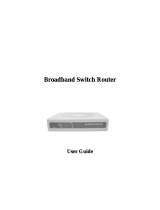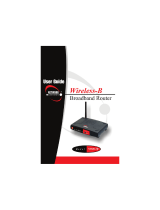
10
Chapter 5: Configuring the PCs
Overview
Wireless-G Broadband Router
Chapter 5: Configuring the PCs
Overview
The instructions in this chapter will help you configure each of your computers to be able to communicate with
the Router.
To do this, you need to configure your PC’s network settings to obtain an IP (or TCP/IP) address automatically, so
your PC can function as a DHCP client. Computers use IP addresses to communicate with the Router and each
other across a network, such as the Internet.
First, find out which Windows operating system your computer is running. You can find out by clicking the Start
button. Read the side panel of the Start menu to find out which operating system your PC is running.
You may need to do this for each computer you are connecting to the Router.
The next few pages tell you, step by step, how to configure your network settings based on the type of Windows
operating system you are using. Make sure that an Ethernet or wireless adapter (also known as a network
adapter) has been successfully installed in each PC you will configure. Once you’ve configured your computers,
continue to “Chapter 6: Using the Router’s Web-Based Utility.”
Configuring Windows 98 and Millennium PCs
1. Click the Start button. Select Settings and click the Control Panel icon. Double-click the Network icon.
2. On the Configuration tab, select the TCP/IP line for the applicable Ethernet adapter, as shown in Figure 5-1.
Do not choose a TCP/IP entry whose name mentions DUN, PPPoE, VPN, or AOL. If the word TCP/IP appears by
itself, select that line. Click the Properties button.
3. Click the IP Address tab. Select Obtain an IP address automatically. (See Figure 5-2.)
IMPORTANT: Important: By default Windows 98,
2000, Me, and XP has TCP/IP installed and set to
obtain an IP address automatically. If your PC does
not have TCP/IP installed, click Start and then
Help. Search for the keyword TCP/IP. Then follow
the instructions to install TCP/IP.
Figure 5-1: Configuration Tab
Figure 5-2: IP Address Tab






















